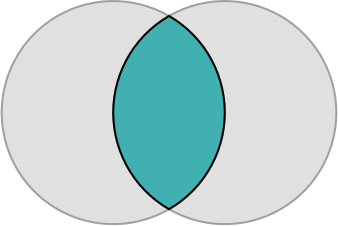Vesica piscis: Difference between revisions
No edit summary |
No edit summary |
||
| Line 4: | Line 4: | ||
<gallery mode="packed" widths="150" heights="150"> | <gallery mode="packed" widths="150" heights="150"> | ||
File:CLUNY-Coffret Christ 1.JPG|[[Christ]] as [[w:Majestas Domini|Majestas Domini]] in his mandorla, surrounded by the | File:CLUNY-Coffret Christ 1.JPG|[[Christ]] as [[w:Majestas Domini|Majestas Domini]] in his mandorla, surrounded by the Evangelist symbols (ivory on wood, Cologne 13th century). | ||
File:Vesica piscis circles.svg|Vesica Piscis | File:Vesica piscis circles.svg|Vesica Piscis | ||
File:Euclid-proof.jpg|Depiction of the Vesica Piscis in Euclid's "Elements | File:Euclid-proof.jpg|Depiction of the Vesica Piscis in Euclid's "Elements | ||
Latest revision as of 13:09, 18 July 2022
The vesica piscis (Latin for "fish bubble") is the geometric intersection of two circles of equal size, with the centre of each circle lying on the periphery of the other. The figure, whose construction first appears in Euclid's "Elements", is also called a mandorla (Latin "almond") and is a motif frequently used in Christian art to represent the aura of the Christ. It is also used as a symbol in Freemasonry. However, the vesica piscis also plays a key role in the Flower of Life in sacred geometry.
The sectional figure can be broken down into two equilateral triangles and four circle segments (see drawing).
-
Christ as Majestas Domini in his mandorla, surrounded by the Evangelist symbols (ivory on wood, Cologne 13th century).
-
Vesica Piscis
-
Depiction of the Vesica Piscis in Euclid's "Elements
-
The geometric decomposition of the sectional figure




